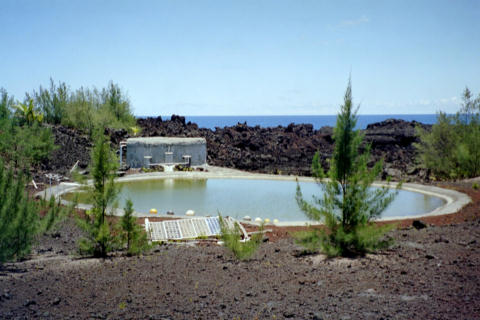


The battery bank consists of these 12 Trojan L-16 deep cycle batteries. These batteries are connected to a 4024 watt true sine wave inverter that converts direct current (DC) from batteries, windmill, and solar panels into alternating current (AC) which can be used by our standard household appliances and electronics.
The electrical sine wave is "cleaner" than municipal electrical output and can handle powering any fine electrical instrument within the wattage limits of the unit.
Perhaps 10 days out of the year there is not enough sun or wind to provide very much electricity, so on these days we give our refrigerators priority over everything else, including our night time lighting needs.


